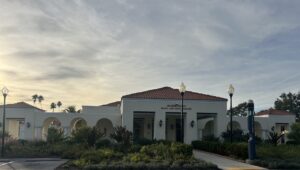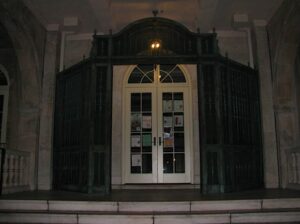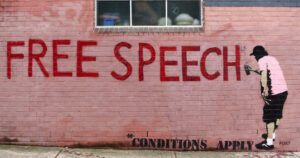In a political climate of book bannings and censorship, education is resistance. To read is to nurture the soul and grow the mind. While lounging at the pool or stuck at the kids’ table on a family vacation, Old School Catalyst encourages students on summer break to continue their journey of self-discovery by exploring new authors, characters and places. A vacation to Salinas Valley or a remote Greek island is possible from the comfort of one’s bedroom or beach towel.
Anna Karenina (1877) by Leo Tolstoy
“Happy families are all alike; every unhappy family is unhappy in its own way.” This quote opens the 700+ page novel Anna Karenina. Shed that polka dot bikini for a fur coat and travel to cheery 1870s Russia to follow the tragic love entanglement of married Anna, who falls in love with Count Vronksy. Anna’s brother is Stepan Oblonsky, a member of the prominent Russian family in Moscow, who has his own affair. Oblonsky’s sister-in-law is Kitty, who is also in love with Vronksy, and their family friend Levin is in love with Kitty. It is the original Gossip Girl or Housewives with vodka instead of champagne.
The book is about passion for life and how to cope with loss. It is more than a love story—it is how to fall in and out of love with living. The class struggles and hypocrisy of upper-crust Russian society are themes that continue to resonate today. Anna Karenina is a classic, beautifully tragic novel that has withstood the test of time. While Russian winters are not Floridian summers, the book’s length does require a two month vacation to finish.
Whoever You Are, Honey (2024) by Olivia Gatwood
Deep in an up-and-coming neighborhood in ritzy Santa Cruz, Middy and her elderly roommate, Bethel, are the last residents whose home is not owned by a tech executive and resembles a glass box. Middy is intrigued by their new neighbors, tech founder Sebastian and his beautiful and mysteriously devoted girlfriend Lena.. The dark and seductive novel follows the cultivation of Middy and Lena’s relationship as they grow closer than friends. The themes of love, nostalgia and desirability in femininity are orbited by the complexity and dangers of AI and technology as power.
Kelly Link, author of The Book of Love, wrote of Gatwood’s novel, “The book reads like a thriller, but it is also a searching and tender exploration of what it means to inhabit a female’s body.” The book has the atmosphere of a poolside read with a darker twist.
Gatwood, from Albuquerque, New Mexico, is a national touring poet, Title IX compliant educator in sexual assault prevention and recovery, screenwriter and performer. This is her debut novel; her two prior poetry books explore themes of feminism, adolescence, homosexuality, gendered violence and true crime. Her performances have been featured on HBO and BBC.
The Pearl (1947) by John Steinbeck
“And, as with all retold tales that are in people’s hearts, there are only good and bad things and black and white things and good and evil things and no in-between anywhere. If this story is a parable, perhaps everyone takes his own meaning from it and reads his own life into it,” ends the prologue of Steinbeck’s 96-page novella.
In the sunny oceanfront of Salinas Valley, California, the setting for all Steinbeck fiction, pearl diver Kino discovers a large pearl which he believes will bring great wealth and prosperity for his family. However, the pearl becomes a source of greed and destruction, an allegory for the dangers of materialism and colonial oppression.
The Guest (2023) by Emma Cline
Cline’s contemporary novel about the darkness of wealth and wielding power follows 22-year-old Alex as she spends a summer in the Hamptons with her new, elderly boyfriend, Simon. Alex lives in New York and relies on sex work and wealthy men to support herself. While Alex accompanies Simon to cocktail and pool parties, she is on the run from a man named Dom, from whom she stole drugs and money. However, Alex pushes Simon’s patience and he kicks her out of his summer home.
Afraid to go back to New York, Alex floats around the beach town as an outsider, forced to reckon with the exploitation of people by the wealthy and to consider what it means to treat youth and beauty as currency. “Maybe she was the ghost she had always imagined herself to be,” Alex ponders on the final day of her exile. “Maybe it was a relief.”
The White Album (1979) by Joan Didion
“We tell ourselves stories to live,” wrote journalist and author Joan Didion in her 1960s autobiographical essay collection. Didion, a California native, dissects the pop culture and feminist movement of the time. The White Album is a reference to the vinyl classic by the Beatles, which some believe inspired Charles Manson and his followers to commit murder. Manson was accused of plotting to incite a race war he titled “Helter Skelter,” named after a Beatles song on the album. Didion wrote several essays detailing her relationship with a Manson follower, Linda Kasabian, who testified against Manson in the court case about the murder of actress Sharon Tate.
The anthology is a reflection of the darkness of American culture interlaced with Didion’s personal experiences and traumas. The sinister history hidden behind California’s sun and palm trees makes this book a summer classic. Didion, a pillar of American journalism and writing, should be added to one’s literary repertoire this season.
The Dharma Bums (1958) by Jack Kerouac
In another part of California, Kerouac’s semi-autobiographical novel follows young American writer and aspiring Buddha Ray Smith and Zen Buddhist Japhy Ryder as they travel through San Francisco’s Bohemian society and climb the High Sierras. The two young poets and mountaineers are exposed to new philosophies, complex people and poetry jams in the woods. The characters undergo spiritual and existential journeys in the midst of a 1950s conservative religious America and their disillusionment with middle class suburbia.
“Happy. Just in my swim shorts, barefooted, wild-haired, in the red fire dark, singing, swigging wine, spitting, jumping, running—that’s the way to live. All alone and free in the soft sands of the beach by the sigh of the sea out there,” wrote Kerouac.
Kerouac and other writers including Allen Ginsberg and William S Burroughs created a literary subculture known as the Beat Movement, in which philosophies of individual freedom and rejection of American suburbia and consumerism were emphasized. The Dharma Bums summarize these themes in Kerouac’s succinct and detail-oriented writing.
Tom Lake (2023) by Anne Patchett
Pattchett’s framed novel, meaning a narrative structure that contains a story within a story, is the story of Lara Nelson who lives with her husband Joe on the cherry farm in rural Michigan run by his family for generations. Their three daughters have come home due to the coronavirus pandemic and they urge Lara to tell them stories of her past while they are stuck picking cherries all day. The novel jumps between the current Nelson family and Lara’s past acting career and relationship with famous movie star Peter Duke, who has recently died in a boating accident.
Patchett’s tender and heartbreaking novel depicts youthful longing, loving and nostalgia. The story is a love letter to memory, family and love. It is a perfect pool-side read as Lara explores who she is through her past. The audiobook is narrated by the talented Meryl Streep.
Hot Milk (2016) by Deborah Levy
Adapted into an upcoming film starring British actress Emma Mackey, directed by British playwright and screenwriter Rebecca Lenkiewicz and set to release on July 4, Levy’s novel follows anthropologist Sofia Papastergiadis as she travels with her mother Rose to the coast of Spain in search of treatment for Rose’s strange illness at the renowned Gomez clinic. Sofia, frustrated with her adult life to take care of her mother, resents both her mother and her situation. In Spain, Sofia meets a seductive and charming woman named Ingrid from Germany. Sofia and Ingrid begin a tumultuous sexual relationship while Sofia grapples with her overbearing mother and her sense of self.
As noted by the Center of Fiction, “Hot Milk is a profound exploration of the sting of sexuality, of unspoken female rage, of myth and modernity, the lure of hypochondria and big pharma, and, above all, the value of experimenting with life; of being curious, bewildered, and vitally alive to the world.”
Summer (1917) by Edith Wharton
17-year-old Charity Royall, a librarian fed up with the monotony of her life in small town New England, embarks on a passionate love affair with handsome architect Lucious Harney. When Lucious reveals that he is engaged to another woman, Charity is forced to reckon with the societal pressures and constraints facing women of her time. Wharton’s novel explores themes of coming-of-age, independence, transformative personal growth and class consciousness.
Wharton wrote, “[Charity] had given him all she had—but what was it compared to the other gifts life held for him? She understood now the case of girls like herself to whom this kind of thing happened. They gave all they had, but their all was not enough; it could not buy more than a few moments.”
Summer is the perfect read for iced tea on the porch or cozying in bed as rain taps on the window.
The Fury (2025) by Alex Michaelides
Ever the master of plot twists and surprises, Michaelides—author of the New York Times bestselling novels The Maidens and The Silent Patient—does not disappoint in his newest thriller. Take a vacation to a relaxing private Greek island with ex-movie star Lana Farrarr and her friends as a murder takes place during Easter holiday. The novel, paced like a Greek tragedy complete with separate acts, is narrated by Eliot Chase, a close confidant of Lana, as he untangles the web of what truly went down that night.
Michaelides, born in Cyprus to Greek parents, maintains elements of Greek myths and tragedy in all of his books. The plot twists will leave one dizzy as they put together the pieces of this intense mystery.




